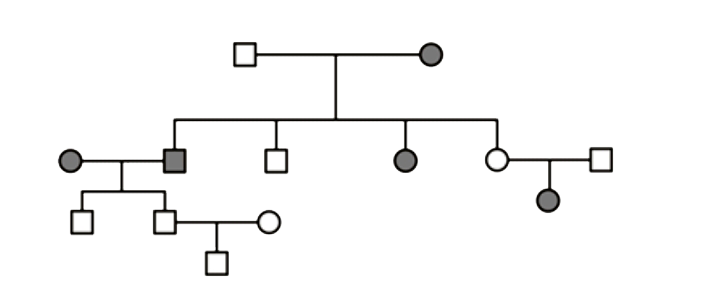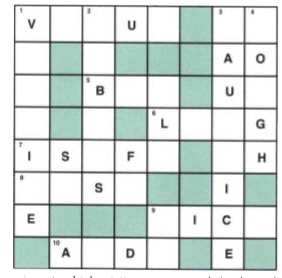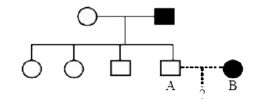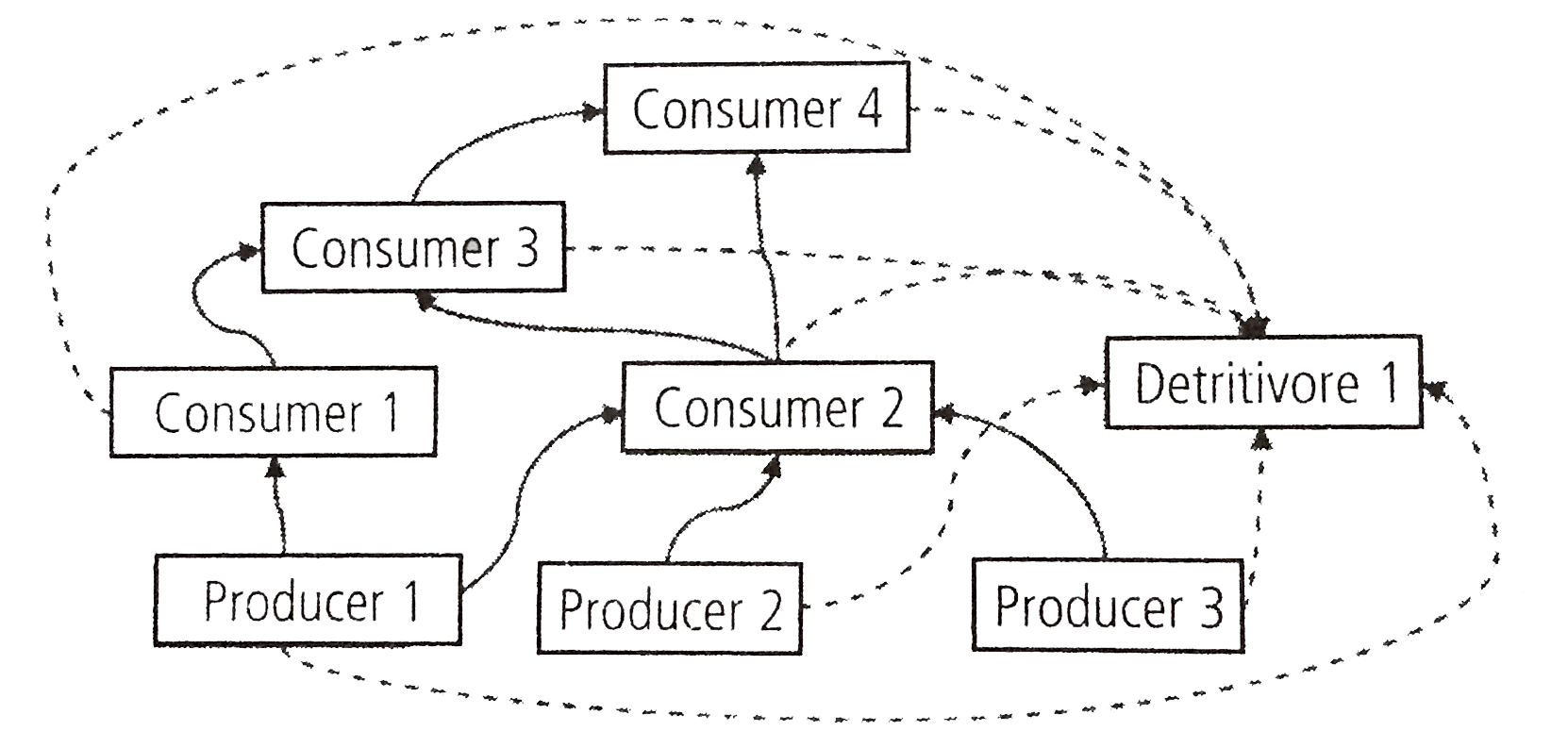The following family tree traces the occurrence of a rare genetic disease. The filled symbols signify the individuals with the disease, whereas the open symbols signify healthy individuals.

Based on this information, the disease is most likely to be
autosomal, dominant
autosomal, recessive
X-linked, recessive
X-linked, dominant
The correct Answer is:B
Steps for identifying the type of traits:
In the case of recessive trait, characteristic condition can appear in the progeny of apparently unaffected parents. Moreover, two affected individuals cannot have unaffected child i.e. either parents or child don.t show the characteristics/disorder.
If both parents and progeny are affected then the trait is of dominant type.
If equal no. of males and females are affected in a generation then the trait is of autosomal type.
If either of the sex is only affected in a generation i.e., only male or female is affected in a generation then the trait is X-linked.
If only males are affected in a family then the trait is Y-linked. It is also called as holandric inheritance. The genes are called as holandric genes.
In the given pedigree chart:
In generation III, the disease is seen in the progeny, while parents are unaffected. Hence, the organism is recessive for the disease.
In generation II, both males and females are equally affected. Also, in generation III, the female is diseases from unaffected parents. It is possible only if the inheritance is autosomal.
Topper's Solved these Questions
Similar Questions
Assume a population that has reached herd immunity for an infectious disease. If an infected individual is introduced to this population. Which of the following is most likely to occur?
View SolutionGiven below is a crossword puzzle. Read the clues across and clues down, and fill up the blank squares.
Clues down
1. Germs or germ - substances introduced into the body to prevent occurrence of an infectious disease.
2. A disease caused by an infected dog that affects the central nervous system.
3. A disease in which the eyes, the skin and the urine turn yellow.
4. The disease pertussis is popularly known as whooping .......
Clues across
1. Category of pathogen that causes diseases like common cold and mumps.
5. This is the vaccine for preventing tuberculosis.
6. An organ usually affected by tuberculosis.
7. Jumbled spelling of one of the most common insect which visits our exposed foods and contaminates them.
8. Cover this part of your body by a handkerchief while sneezing to prevent droplet infection to others.
9. These may readily grow in your hair, if you do not wash it regularly.
10. A disease that weakens body's defence system against infections.
View Solution
Knowledge Check
Assume a population that has reached herd immunity for an infectious disease. If an infected individual is introduced to this population. Which of the following is most likely to occur?
AThe infection will spread exponentially across the populationBThe infection will spread linearly across the populationCA few individuals may get infected, but the infection will not spread across the populationDNo other individual will be infected by the diseaseIn the pedigree shown below, individuals with the solid symbols suffers from albinism. You would counsel the couple A & B that the probability that each of their child will have the disease is :-
 A0B0.25C0.25D0.75
A0B0.25C0.25D0.75In the following question a statement of assertion (A) is followed by a statement of reason (R). Mark the correct choice as :
Assertion (A): Sharing of injection needles between two individuals is not recommended.
Reason (R): This transmits STDs like AIDS and Hepatitis from the diseased person to the healthy person.ABoth assertion (A) and reason (R) are true and reason (R) is the correct explanation of assertion (A).BBoth assertion (A) and reason (R) are true but reason (R) is not the correct explanation of assertion (A).CAssertion (A) is true but reason (R) is false.DAssertion (A) is false but reason (R) is true.
In the pedigree shown below, individuals with the solid symbols suffers from albinism. You would counsel the couple A & B that the probability that each of their child will have the disease is :-

View SolutionLet d1,d2,d3 be three mutually exclusive diseases. Let S be the set of observable symptoms of these diseases. A doctor has the following information from a random sample of 5000 patients: 1800 had disease d1, 2100 has disease d2 and the others had disease d3. 1500 patients with disease d1, 1200 patients with disease d2and 900 patients with disease d3 showed the symptom. Which of the diseases is the patient most likely to have?
View SolutionLet d1, d2, d3 be three mutually exclusive diseases. Let S be the set of observable symptoms of these diseases. A doctor has the following information from a random sample of 5000 patients: 1800 had disease d1, 2100 has disease d2 and the others had disease d3. 1500 patients with disease d1, 1200 patients with disease d2 and 900 patients with disease d3 showed the symptom. Which of the diseases is the patient most likely to have?
View SolutionThe given diagram represents the relationships between organisms in a remote pond ecosystem. From this information. Which of the following is the most likely to be correct?

1) DDT present in the ecosystem would accumulate to the highest concentrations in the tissues of detritivore 1.
2) The introduction of consumer 4 individuals from an external population would lead a temporary increase in number of producer 2.
3) Disease in the producer 1 population would lead to an increase in the producer 3 population.
4) Extermination of consumer 3 would cause a sustained increase in the population of consumer 2.
View SolutionIn the following questions, you have two passages with 5 questions in each passage. Read the passages carefully and choose the best answer to each question out of the four alternatives.
PASSAGE -1
The World Health Organization is briefly called W.H.O. It is a specialized agency of the United Nations and was established in 1948.
International health workers can be seen working in all kinds of surroundings: in deserts, jungles, mountains, coconut groves, and rice fields. They help the sick to attain health and the healthy to maintain their health.
This global health team assists the local health workers in stopping the spread of what are called communicable diseases, like cholera. These diseases can spread from one country to another and so can be a threat to world health.
W.H.O. assists different national health authorities not only in controlling diseases but also in preventing them altogether. Total prevention of diseases is possible in a number of ways. Everyone knows how people, particularly children, are vaccinated against one disease or another. Similarly, most people are familiar with the spraying of houses with poisonous substances which kill disease-carrying insects.
"Total prevention of diseases is possible in a number of ways". The author has given illustrations of:
View Solution
